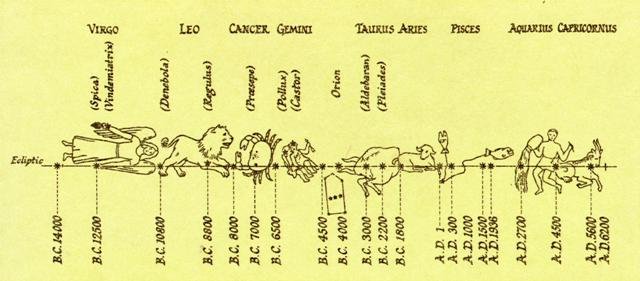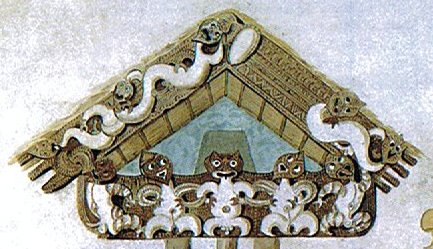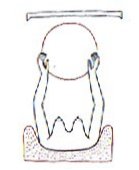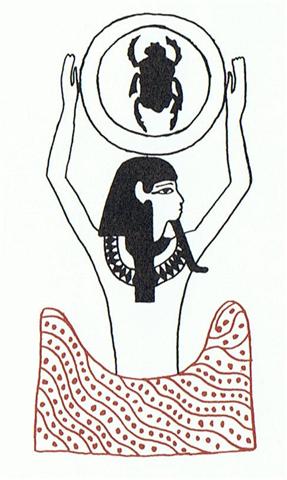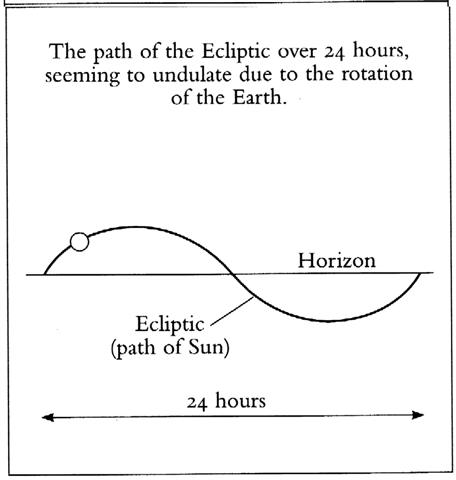|
TRANSLATIONS
Once again:
Gemini once arrived at spring equinox (north of the equator) and that was even earlier than Orion. The turtle with two heads can refer to Gemini. The memory of the twins never will die. The turtle is a creature with two shells (the twins) and it is also a creature in the sea (or on its surface). When it was chosen as the beast for spring equinox its habitat was perfect - it was a border line creature, who even went ashore to lay eggs. The offspring of the turtle will be born on land. Looking at the overview above we can see that also Cancer should be a suitable creature by cause of its two shells. Once some 9,000 years ago it could be the creature of spring equinox. The shells are not only similar to the two halves of the sky roof but such a shell also resembles the top of the human cranium. In other words the Crab could represent the old winter half of the year, the half which was in the water and which now should be dead at spring equinox.
Then comes Leo and he could at an even earlier point in time have been the representative of the summer half of the year and in that vision he should appear at spring equinox. Virgo would be his 'winter maid' and we cannot push father back in time than this. Leo and Virgo were there at the beginning.
The claws of Cancer (and also of Scorpio) probably were used for symbols, they are instruments like a pair of scissors. They cut up time. The main point to cut was to end winter, and that had to be done at spring equinox. Therefore the upside down head of the turtle in Orion had to bite the cycle of the sun. However, in Ga5-7 the cutting up of the cycle cannot be shown inside the path of the sun, only the arm holding the scissors can be depicted:
The 'paintbrush' in Saturn's hand is more probably meant to show a spear. The old king must be speared. Saturn is the one who kills in time. Thereby he must take the consequences and make a new fire. The sign of scissors (kotikoti) is Y and the claw-like form at the end of the belt of Saturn should refer to his function of cutting the old season at the proper time. The two time measures at Ga5-7 refers to the Moon (118) respectively to the Sun (182). It is Sun in his 'costume of Mars' (7) who here is hiding his hand. The cycle of the Sun is primarily what is cut, but also Moon is involved. She never dies, but it is her rulership which must end here. Sun is born at winter solstice, and at summer solstice he has reached the point where he must be cut to shape and not continue growing forever. The high neck of the figure at left in Ga5-7 indicates this. Y is at the end of the belt of Mars in the Mayan cartouche above. I could have misinterpreted this sign: ... North of the equator it is Mars who is sitting sideways, Saturn not. Mars has his girdle in form of Y, and on his 'equator' this Y crotch is just below Sun collecting - it seems - the pupil lost from the Sun eye above. The tray Mars is holding in front has fire below it. The tray is the surface of the earth ... It can be the opposite, that Sun above is the result of the egg which has been hatched at the end of Y. But I will not change the text in the dictionary, I wrote 'it seems'. Whereas the Y at the end of the belt of Saturn hangs down the Y at the end of the belt of Mars is fat and striving upwards. Mars means the striving upwards of spring Sun and Saturn means the flat (horizontal) end of him. The egg is produced at the apex and the frightened King knows his head is loose like a milk-tooth:
Inside the iris of Sun there is a black hole, and it identifies the lost part, the egg, which will produce the winter season, the 'girl' (Virgo). After the operation at apex Sun will decline in force. The Mars arm holding the newly operated Sun high is connected with the egg at the end of his Y belt. It seems to be day 183 according to the text:
Te Poko Uri is the station, and poko could be the hollow in the centre of the eye of Sun, the hollow which is left after the centre has been transformed into an egg, cfr at bottom in Ga5-8.
In Ca2-9 the arms held high presumably refer to Y:
At Mercury in Ca2-8 midsummer Sun is turning around. From that point (tara) he will be with his winter maid, mistreated as he has been. Tagata without hands (rima) means Sun is no longer present. Even the arms are wavelike now. The tail of tara is formed like a growing Moon crescent. The gesture of Y has over time been transformed in various ways, I guess, from an early concept and in for instance ancient Egypt it was achet (the horizon):
The horizon marks the boundary between 'water' and 'fire', between the world underneath and the world above, between winter and summer, between night and day. In another picture (from Wilkinson) we can see more details:
The central Sun figure is not a turtle nor a crab, it is a beetle, a land creature who is rolling the ball of earth in front of him. It has a carapace and it can fly. The hands are placed at the equinoxes we now can infer. Also a hand is formed lika a pair of scissors, with thumb as one part and the rest of the fingers as the other. The mountain pair repeats this form. And I suspect the dots and wavy bands are meant to represent the 'water' world below the horizon. In the Gateway of the Sun the hands are also located at the equinoxes:
High above spring equinox there is the sky dome carapace (top of the 'staff' at left). The first half of Sun's path ends here. Then comes the top of the staff at right, which presents Y as its main sign. In the center Sun himself has black holes where once his eyes were and his tears are streaming. He is not very happy. During only a quarter of his cycles (day and year) Sun is present and rising, climbing like a rat in the sky up an imagined bamboo staff (with 3 segments). Having reached his high tide the movement will go in the other direction. Dry land will be submerged by water again and this process will take another quarter, before land is totally submerged (Sun has left):
(Wikipedia) The Y-form of the belt of Mars should be seen oriented in the way we are accustomed to:
Now we can see Sun at top left (in the past) and without his pupil - the egg which will be swallowed by the Y-form which indicates the shrinking gap between sky roof (ecliptic) and horizon. Mars is looking back, because the season of Y is in the past and Mars will return Sun to the right of the Tree (maybe drawn as the 'turban'). Mars is here sitting down around winter solstice, it sems. His 'path-of-the-Sun' belt is first going down and then going up again, until it ends at a point where we no longer can see it. The first sign on top of his tray is the same kind of sign which once was used in ancient Egypt at winter solstice and which we have found also in the rongorongo texts, e.g. at left in Ca1-6:
In the Gateway of the Sun the Y-form is the top of the autumn staff. The vertical dimension has been used in order to show the vertical movement of the Sun. Time goes from left at bottom upwards, to the right, and then down again. Only the great head of the Sun god is above the horizon, the rest is down in the water. In the diagram above, showing the undulating path of the ecliptic with the horizon as a fixed reference, time is also flowing from bottom left upwards and then down again. Sun is present and rising only during a quarter of his cycles:
Moon must be the ruler during 3 quarters, and in Ga5-7 we can read that the year is beginning at bottom left with no Moon crescent, only a ghostly henua (midwinter). Not until higher up will Sun be present in person. |
